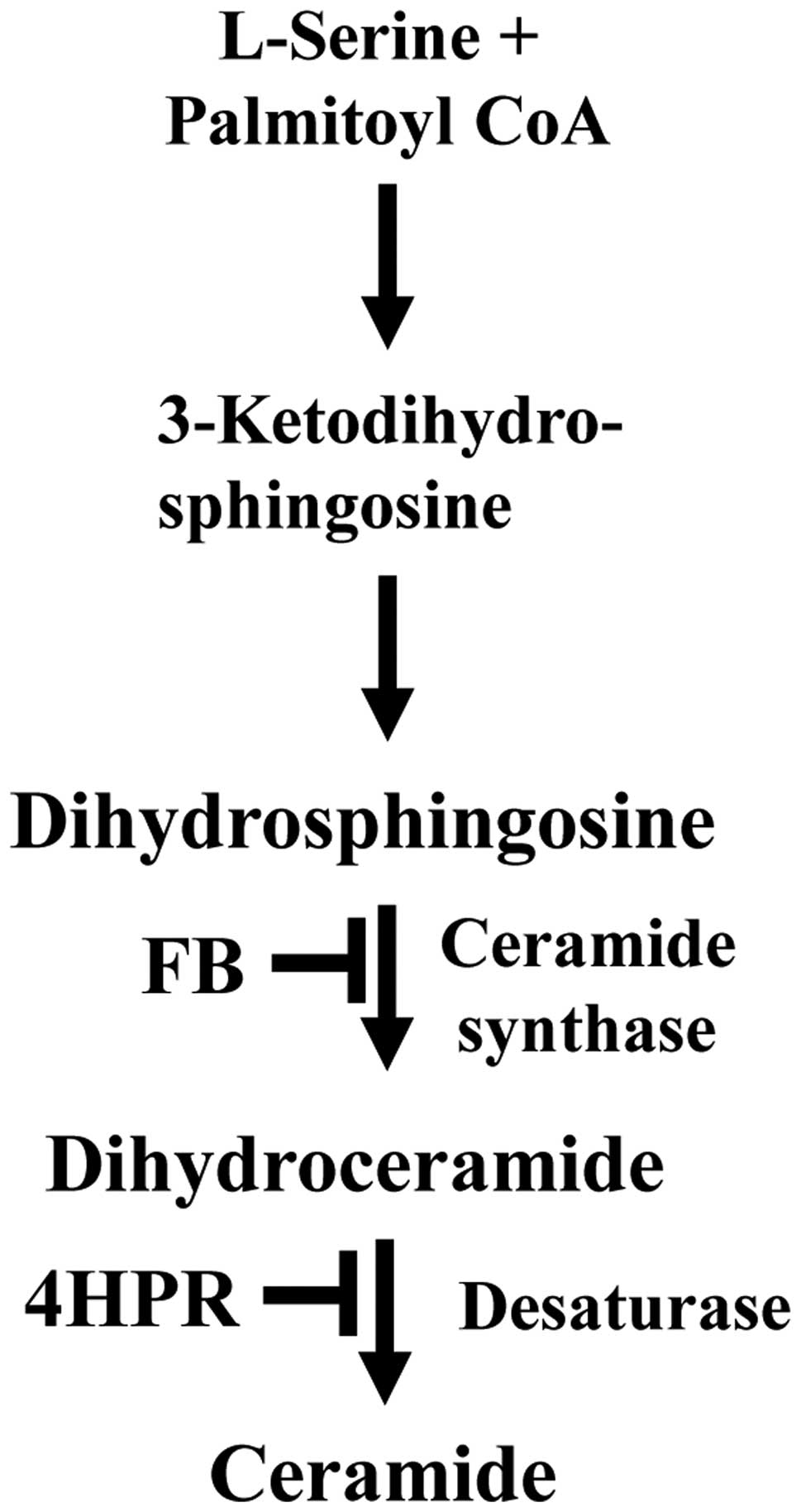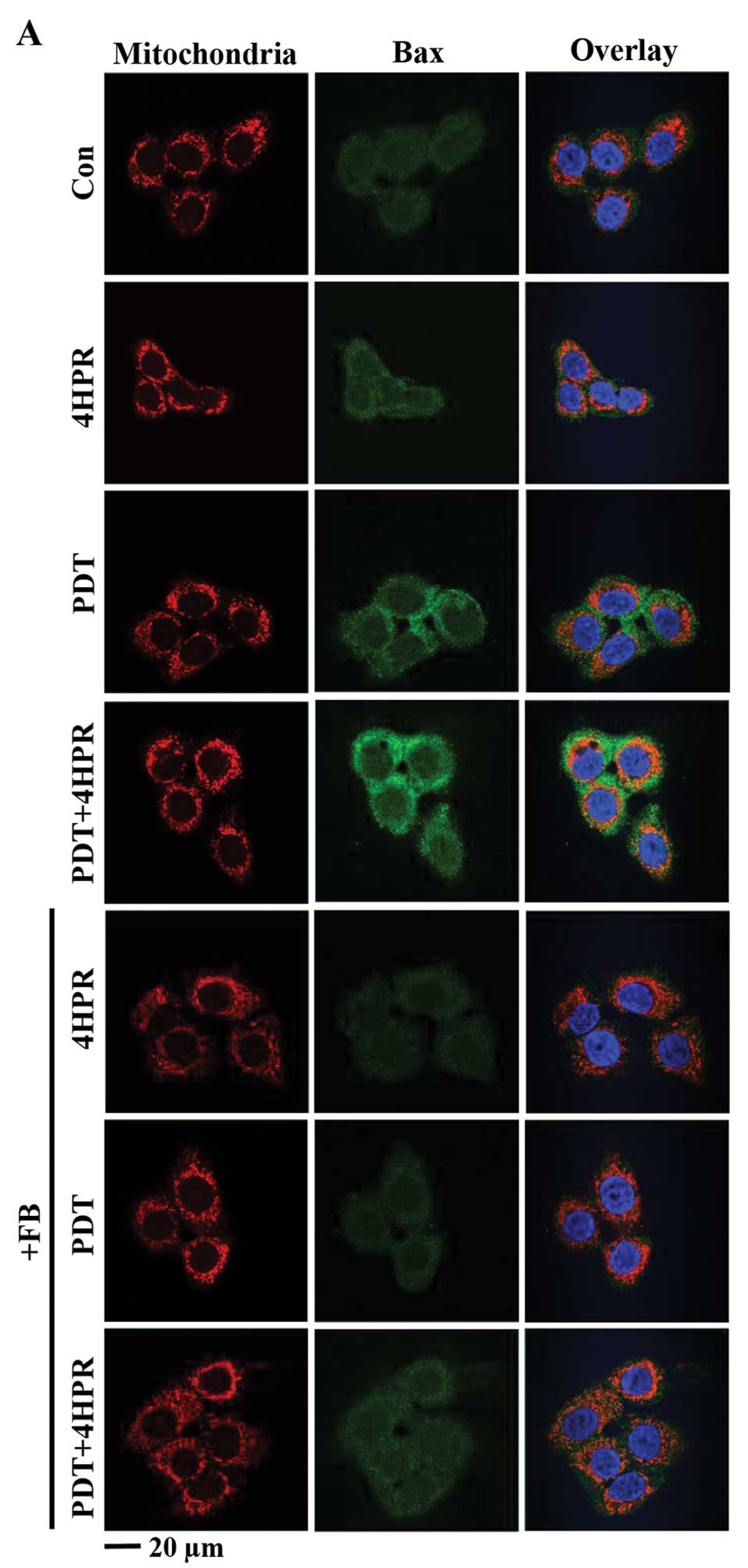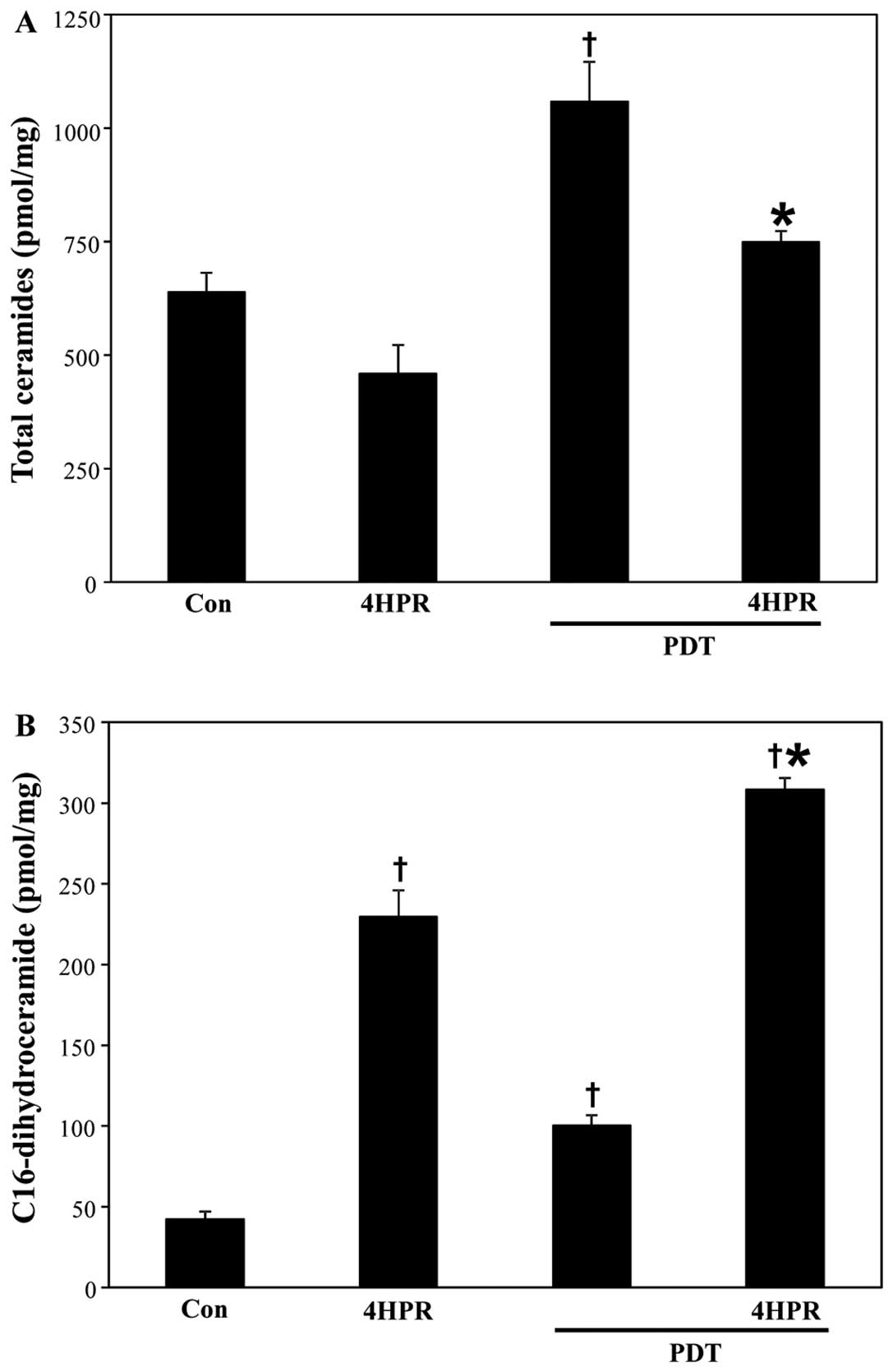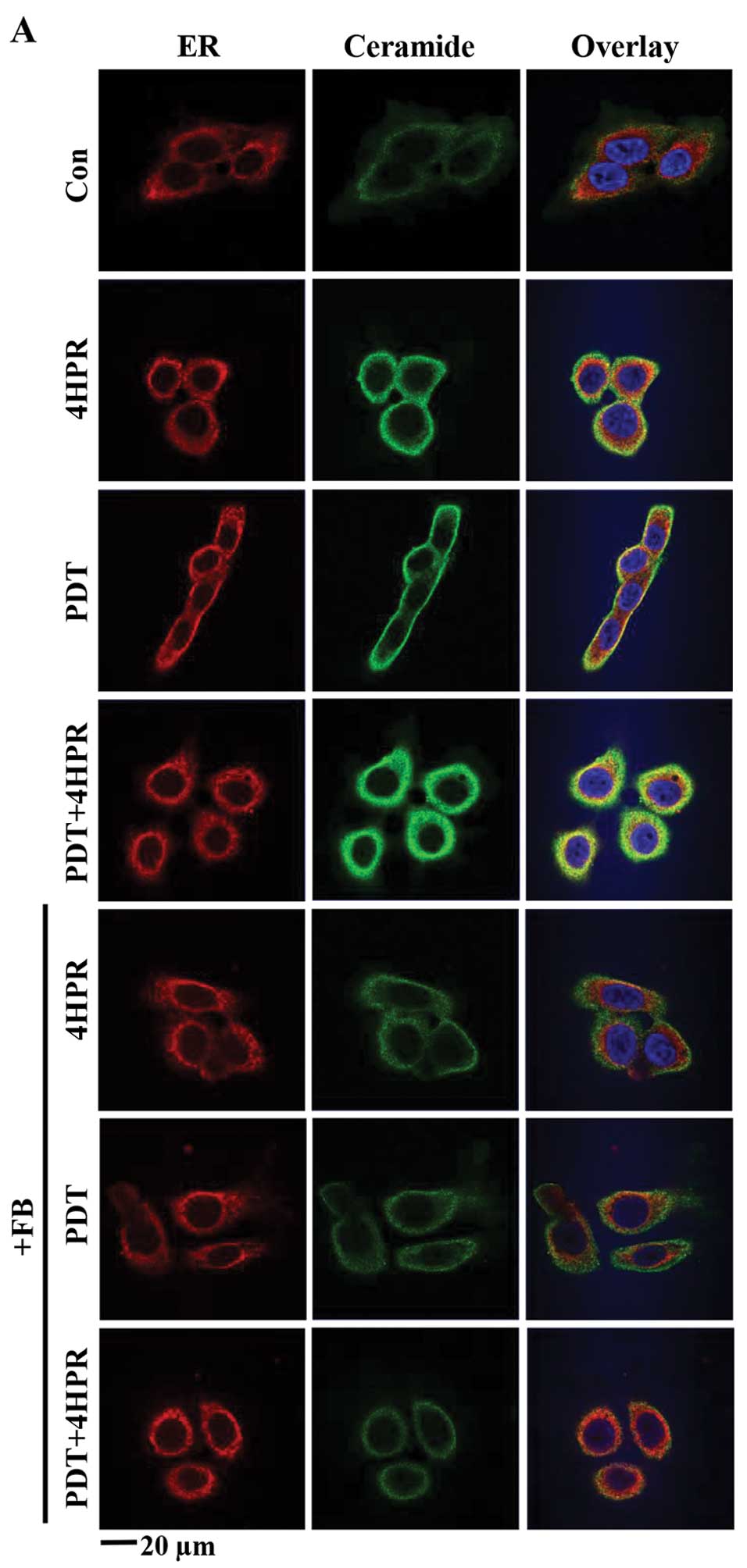|
1
|
Agostinis P, Berg K, Cengel KA, Foster TH,
Girotti AW, Gollnick SO, Hahn SM, Hamblin MR, Juzeniene A, Kessel
D, Korbelik M, Moan J, Mroz P, Nowis D, Piette J, Wilson BC and
Golab J: Photodynamic therapy of cancer: an update. CA Cancer J
Clin. 61:250–281. 2011. View Article : Google Scholar : PubMed/NCBI
|
|
2
|
Boisteau O, Gautier F, Cordel S, Henry F,
Harb J, Douillard JY, Vallette FM, Meflah K and Gregoire M:
Apoptosis induced by sodium butyrate treatment increases
immunogenicity of a rat colon tumor cell line. Apoptosis.
2:403–412. 1997. View Article : Google Scholar : PubMed/NCBI
|
|
3
|
Sato M, Harada K, Yura Y, Azuma M,
Kawamata H, Iga H, Tsujimoto H, Yoshida H and Adachi M: The
treatment with differentiation- and apoptosis-inducing agent,
vesnarinone, of a patient with oral squamous cell carcinoma.
Apoptosis. 2:313–318. 1997. View Article : Google Scholar : PubMed/NCBI
|
|
4
|
Schiffer IB, Gebhard S, Heimerdinger CK,
Heling A, Hast J, Wollscheid U, Seliger B, Tanner B, Gilbert S,
Beckers T, Baasner S, Brenner W, Spangenberg C, Prawitt D, Trost T,
Schreiber WG, Zabel B, Thelen M, Lehr HA, Oesch F and Hengstler JG:
Switching off HER-2/neu in a tetracycline-controlled mouse tumor
model leads to apoptosis and tumor-size-dependent remission. Cancer
Res. 63:7221–7231. 2003.PubMed/NCBI
|
|
5
|
Stahnke K, Eckhoff S, Mohr A, Meyer LH and
Debatin KM: Apoptosis induction in peripheral leukemia cells by
remission induction treatment in vivo: selective depletion and
apoptosis in a CD34+ subpopulation of leukemia cells.
Leukemia. 17:2130–2139. 2003. View Article : Google Scholar : PubMed/NCBI
|
|
6
|
Urosevic M, Maier T, Benninghoff B, Slade
H, Burg G and Dummer R: Mechanisms underlying imiquimod-induced
regression of basal cell carcinoma in vivo. Arch Dermatol.
139:1325–1332. 2003. View Article : Google Scholar : PubMed/NCBI
|
|
7
|
Henderson BW, Gollnick SO, Snyder JW,
Busch TM, Kousis PC, Cheney RT and Morgan J: Choice of
oxygen-conserving treatment regimen determines the inflammatory
response and outcome of photodynamic therapy of tumors. Cancer Res.
64:2120–2126. 2004. View Article : Google Scholar : PubMed/NCBI
|
|
8
|
Wilson JJ, Jones H, Burock M, Smith D,
Fraker DL, Metz J, Glatstein E and Hahn SM: Patterns of recurrence
in patients treated with photodynamic therapy for intraperitoneal
carcinomatosis and sarcomatosis. Int J Oncol. 24:711–717.
2004.PubMed/NCBI
|
|
9
|
Rhodes LE, de Rie M, Enstrom Y, Groves R,
Morken T, Goulden V, Wong GA, Grob JJ, Varma S and Wolf P:
Photodynamic therapy using topical methyl aminolevulinate vs
surgery for nodular basal cell carcinoma: results of a multicenter
randomized prospective trial. Arch Dermatol. 140:17–23. 2004.
View Article : Google Scholar : PubMed/NCBI
|
|
10
|
Mariani L, Formelli F, DePalo G, Manzari
A, Camerini T, Campa T, Di Mauro MG, Crippa A, Delle Grottaglie M,
Del Vecchio M, Marubini E, Costa A and Veronesi U: Chemoprevention
of breast cancer with fenretinide (4-HPR): study of long-term
visual and ophthalmologic tolerability. Tumori. 82:444–449.
1996.PubMed/NCBI
|
|
11
|
Dolgachev V, Nagy B, Taffe B, Hanada K and
Separovic D: Reactive oxygen species generation is independent of
de novo sphingolipids in apoptotic photosensitized cells. Exp Cell
Res. 288:425–436. 2003. View Article : Google Scholar : PubMed/NCBI
|
|
12
|
Dolgachev V, Farooqui MS, Kulaeva OI,
Tainsky MA, Nagy B, Hanada K and Separovic D: De novo ceramide
accumulation due to inhibition of its conversion to complex
sphingolipids in apoptotic photosensitized cells. J Biol Chem.
279:23238–23249. 2004. View Article : Google Scholar : PubMed/NCBI
|
|
13
|
Wispriyono B, Schmelz E, Pelayo H, Hanada
K and Separovic D: A role for the de novo sphingolipids in
apoptosis of photosensitized cells. Exp Cell Res. 279:153–165.
2002. View Article : Google Scholar : PubMed/NCBI
|
|
14
|
Rehman F, Shanmugasundaram P and Schrey
MP: Fenretinide stimulates redox-sensitive ceramide production in
breast cancer cells: potential role in drug-induced cytotoxicity.
Br J Cancer. 91:1821–1828. 2004. View Article : Google Scholar : PubMed/NCBI
|
|
15
|
Kraveka JM, Li L, Szulc ZM, Bielawski J,
Ogretmen B, Hannun YA, Obeid LM and Bielawska A: Involvement of
dihydroceramide desaturase in cell cycle progression in human
neuroblastoma cells. J Biol Chem. 282:16718–16728. 2007. View Article : Google Scholar : PubMed/NCBI
|
|
16
|
Boppana NB, Kodiha M, Stochaj U, Lin HS,
Haimovitz-Friedman A, Bielawska A, Bielawski J, Divine GW, Boyd JA,
Korbelik M and Separovic D: Ceramide synthase inhibitor fumonisin
B1 inhibits apoptotic cell death in SCC17B human head and neck
squamous carcinoma cells after Pc4 photosensitization. Photochem
Photobiol Sci. 13:1621–1627. 2014. View Article : Google Scholar : PubMed/NCBI
|
|
17
|
Biel MA: Photodynamic therapy of head and
neck cancers. Methods Mol Biol. 635:281–293. 2010. View Article : Google Scholar : PubMed/NCBI
|
|
18
|
Separovic D, Saad ZH, Edwin EA, Bielawski
J, Pierce JS, Van Buren E and Bielawska A: C16-ceramide analog
combined with Pc 4 photodynamic therapy evokes enhanced total
ceramide accumulation, promotion of DEVDase activation in the
absence of apoptosis, and augmented overall cell killing. J Lipids.
2011.1–9. 2011. View Article : Google Scholar
|
|
19
|
Kodiha M, Brown CM and Stochaj U: Analysis
of signaling events by combining high-throughput screening
technology with computer-based image analysis. Sci Signal.
1:122008.
|
|
20
|
Separovic D, Semaan L, Tarca AL, Awad
Maitah MY, Hanada K, Bielawski J, Villani M and Luberto C:
Suppression of sphingomyelin synthase 1 by small interference RNA
is associated with enhanced ceramide production and apoptosis after
photodamage. Exp Cell Res. 314:1860–1868. 2008. View Article : Google Scholar : PubMed/NCBI
|
|
21
|
Wang E, Norred WP, Bacon CW, Riley RT and
Merrill AH Jr: Inhibition of sphingolipid biosynthesis by
fumonisins. Implications for diseases associated with Fusarium
moniliforme. J Biol Chem. 266:14486–14490. 1991.PubMed/NCBI
|
|
22
|
Garcia-Calvo M, Peterson EP, Leiting B,
Ruel R, Nicholson DW and Thornberry NA: Inhibition of human
caspases by peptide-based and macromolecular inhibitors. J Biol
Chem. 273:32608–32613. 1998. View Article : Google Scholar : PubMed/NCBI
|
|
23
|
Souers AJ, Leverson JD, Boghaert ER,
Ackler SL, Catron ND, Chen J, Dayton BD, Ding H, Enschede SH,
Fairbrother WJ, Huang DC, Hymowitz SG, Jin S, Khaw SL, Kovar PJ,
Lam LT, Lee J, Maecker HL, Marsh KC, Mason KD, Mitten MJ, Nimmer
PM, Oleksijew A, Park CH, Park CM, Phillips DC, Roberts AW, Sampath
D, Seymour JF, Smith ML, Sullivan GM, Tahir SK, Tse C, Wendt MD,
Xiao Y, Xue JC, Zhang H, Humerickhouse RA, Rosenberg SH and Elmore
SW: ABT-199, a potent and selective BCL-2 inhibitor, achieves
antitumor activity while sparing platelets. Nat Med. 19:202–208.
2013. View
Article : Google Scholar : PubMed/NCBI
|
|
24
|
Hail N Jr, Kim HJ and Lotan R: Mechanisms
of fenretinide-induced apoptosis. Apoptosis. 11:1677–1694. 2006.
View Article : Google Scholar : PubMed/NCBI
|
|
25
|
Erdreich-Epstein A, Tran LB, Bowman NN,
Wang H, Cabot MC, Durden DL, Vlckova J, Reynolds CP, Stins MF,
Groshen S and Millard M: Ceramide signaling in fenretinide-induced
endothelial cell apoptosis. J Biol Chem. 277:49531–49537. 2002.
View Article : Google Scholar : PubMed/NCBI
|
|
26
|
Chiu SM, Xue LY, Usuda J, Azizuddin K and
Oleinick NL: Bax is essential for mitochondrion-mediated apoptosis
but not for cell death caused by photodynamic therapy. Br J Cancer.
89:1590–1597. 2003. View Article : Google Scholar : PubMed/NCBI
|
|
27
|
Tiwari M, Kumar A, Sinha RA, Shrivastava
A, Balapure AK, Sharma R, Bajpai VK, Mitra K, Babu S and Godbole
MM: Mechanism of 4-HPR-induced apoptosis in glioma cells: evidences
suggesting role of mitochondrial-mediated pathway and endoplasmic
reticulum stress. Carcinogenesis. 27:2047–2058. 2006. View Article : Google Scholar : PubMed/NCBI
|
|
28
|
Ulukaya E, Pirianov G, Kurt MA, Wood EJ
and Mehmet H: Fenretinide induces cytochrome c release, caspase 9
activation and apoptosis in the absence of mitochondrial membrane
depolarisation. Cell Death Differ. 10:856–859. 2003. View Article : Google Scholar : PubMed/NCBI
|
|
29
|
Wang H, Maurer BJ, Reynolds CP and Cabot
MC: N-(4-hydroxyphenyl)retinamide elevates ceramide in
neuroblastoma cell lines by coordinate activation of serine
palmitoyltransferase and ceramide synthase. Cancer Res.
61:5102–5105. 2001.PubMed/NCBI
|
|
30
|
Cowart LA, Szulc Z, Bielawska A and Hannun
YA: Structural determinants of sphingolipid recognition by
commercially available anti-ceramide antibodies. J Lipid Res.
43:2042–2048. 2002. View Article : Google Scholar : PubMed/NCBI
|
|
31
|
Oplustilova L, Wolanin K, Mistrik M,
Korinkova G, Simkova D, Bouchal J, Lenobel R, Bartkova J, Lau A,
O’Connor MJ, Lukas J and Bartek J: Evaluation of candidate
biomarkers to predict cancer cell sensitivity or resistance to
PARP-1 inhibitor treatment. Cell Cycle. 11:3837–3850. 2012.
View Article : Google Scholar : PubMed/NCBI
|
|
32
|
Separovic D, Joseph N, Breen P, Bielawski
J, Pierce JS, van Buren E, Bhatti G, Saad ZH, Bai A and Bielawska
A: Combining anticancer agents photodynamic therapy and LCL85 leads
to distinct changes in the sphingolipid profile, autophagy,
caspase-3 activation in the absence of cell death, and long-term
sensitization. Biochem Biophys Res Commun. 409:372–377. 2011.
View Article : Google Scholar : PubMed/NCBI
|
|
33
|
Lee H, Rotolo JA, Mesicek J, Penate-Medina
T, Rimner A, Liao WC, Yin X, Ragupathi G, Ehleiter D, Gulbins E,
Zhai D, Reed JC, Haimovitz-Friedman A, Fuks Z and Kolesnick R:
Mitochondrial ceramide-rich macrodomains functionalize Bax upon
irradiation. PLoS One. 6:e197832011. View Article : Google Scholar : PubMed/NCBI
|













